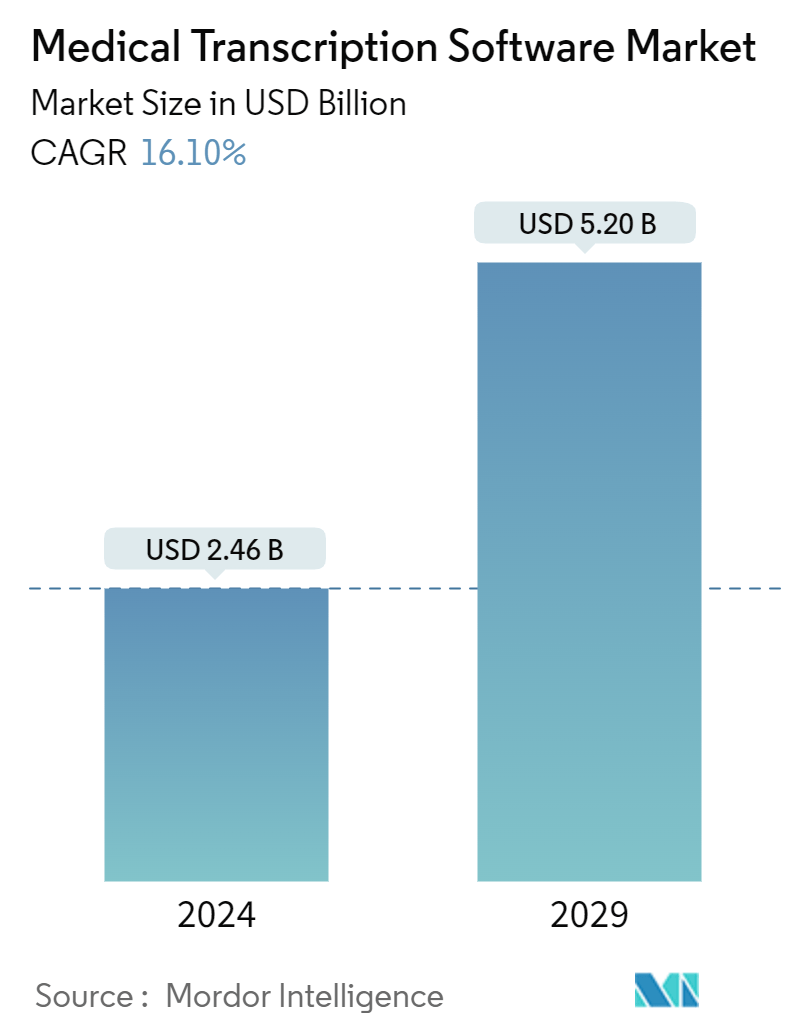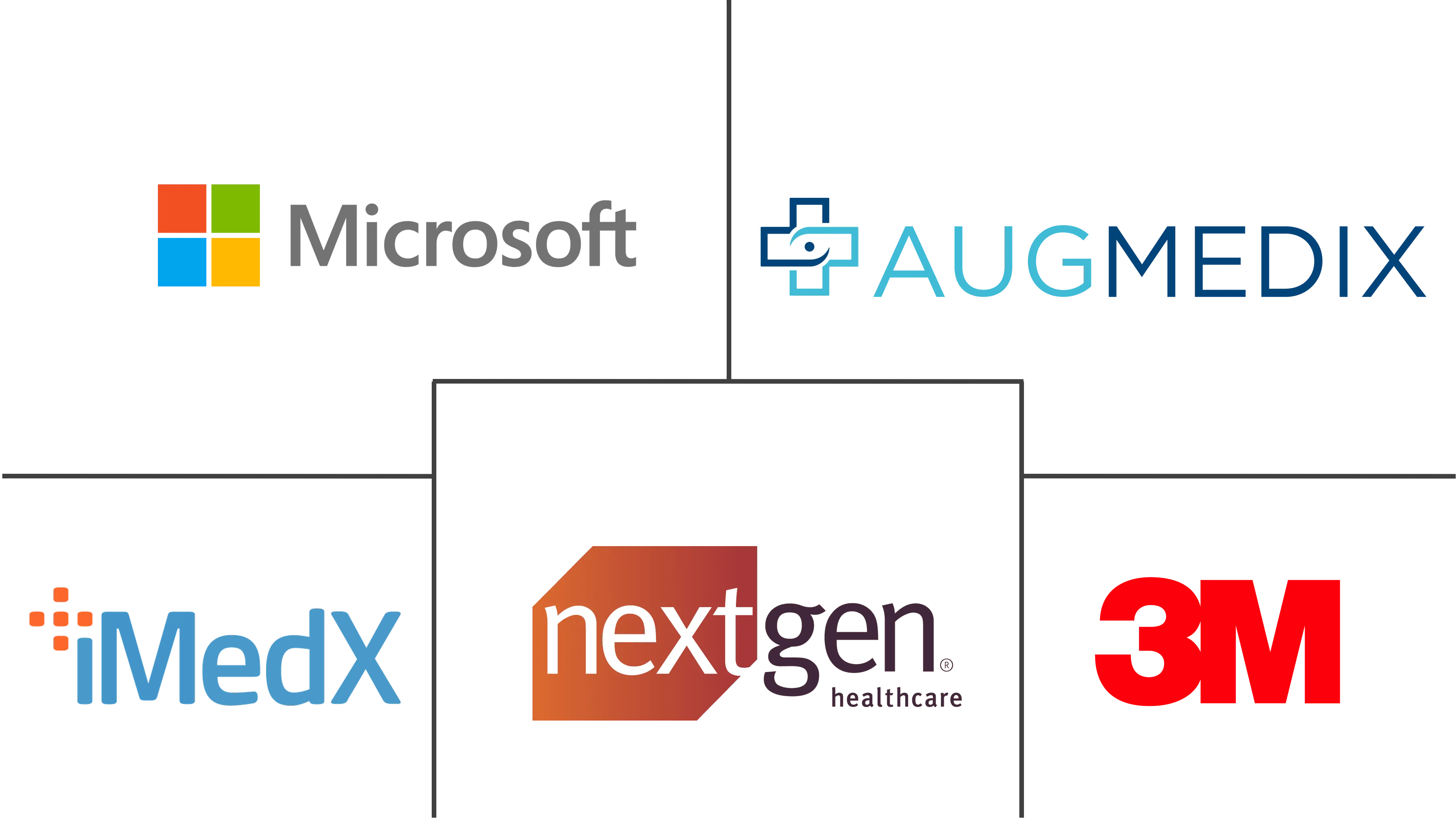Market Size of Medical Transcription Software Industry

| Study Period | 2019 - 2029 |
| Market Size (2024) | USD 2.46 Billion |
| Market Size (2029) | USD 5.20 Billion |
| CAGR (2024 - 2029) | 16.10 % |
| Fastest Growing Market | Asia Pacific |
| Largest Market | North America |
| Market Concentration | High |
Major Players
*Disclaimer: Major Players sorted in no particular order |
Medical Transcription Software Market Analysis
The Medical Transcription Software Market size is estimated at USD 2.46 billion in 2024, and is expected to reach USD 5.20 billion by 2029, growing at a CAGR of 16.10% during the forecast period (2024-2029).
Factors such as increasing demand for accurate documentation and expansion of healthcare facilities, rising demand for telemedicine and remote patient monitoring, and technological advancements in medical transcription are expected to boost the market's growth during the forecast period.
Accurate maintenance of patient records, encompassing major and minor details, is fundamental to delivering top-tier medical care, from diagnoses to treatment and overall well-being. For instance, a November 2022 article in Acuvate highlighted that an AI-driven automated medical transcription solution utilizing speech recognition technology is instrumental across various primary and secondary care domains. It adeptly transcribes essential medical data, including patient history, current health status, diagnoses, medication names, and procedures.
In addition to the above context, automating audio file transcription is cost-efficient, reducing overall expenses. Given the rising adoption of transcription software in healthcare facilities due to its cost-effectiveness, demand for such software is projected to surge, subsequently driving the market's growth during the forecast period.
Over the years, the healthcare industry has embraced significant technological advancements. The sector has evolved from relying on paper-based medical documents to a paperless system. A common practice in healthcare is physicians making audio recordings immediately after patient visits to swiftly document diagnostic details and treatment plans. Key players are collaborating to introduce advanced medical transcription technologies to address these challenges. For instance, in March 2024, Oracle and NVIDIA teamed up to tackle the challenges of transcribing audio quickly and accurately across healthcare facilities. They rolled out an AI-driven medical transcription solution, utilizing NVIDIA's Riva speech and translation AI toolkit on Oracle's Cloud Infrastructure (OCI) Container Engine for Kubernetes (OKE). Thus, such launches are expected to increase the adoption of medical transcription software for transcribing accurate patient data, hence anticipated to augment the market's growth during the forecast period.
Furthermore, the rise of AI-integrated medical transcription software is set to boost their uptake in healthcare facilities, driving market expansion. For instance, in March 2024, Dolbey unveiled AI Assist, an enhancement of Fusion Narrate powered by nVoq. This generative AI software streamlines healthcare workflows and marks a significant leap in speech recognition and automation, granting healthcare professionals access to the latest generative AI in a secure, private, and HIPAA-compliant setting. Healthcare entities can automate labor-intensive tasks by harnessing this AI, leading to substantial productivity gains.
Moreover, in April 2024, Augmedix launched Augmedix Go, a fully automated and generative AI-powered medical documentation software for emergency departments (EDs), and it is already in use at one of the biggest health systems in the United States. The ambient documentation tool for EDs leverages automatic speech recognition and natural language processing. Such developments are expected to boost the adoption of such advanced software across healthcare facilities, further bolstering the market's growth.
Therefore, the rising adoption of medical transcription software across healthcare facilities owing to increasing demand for accurate documentation, growing technological advancements, increasing strategic activities adopted by the companies, and new product launches are expected to boost the market's growth during the forecast period. However, the high cost, data security and privacy concerns, and stringent regulatory compliance requirements are expected to hinder the market's growth during the forecast period.

